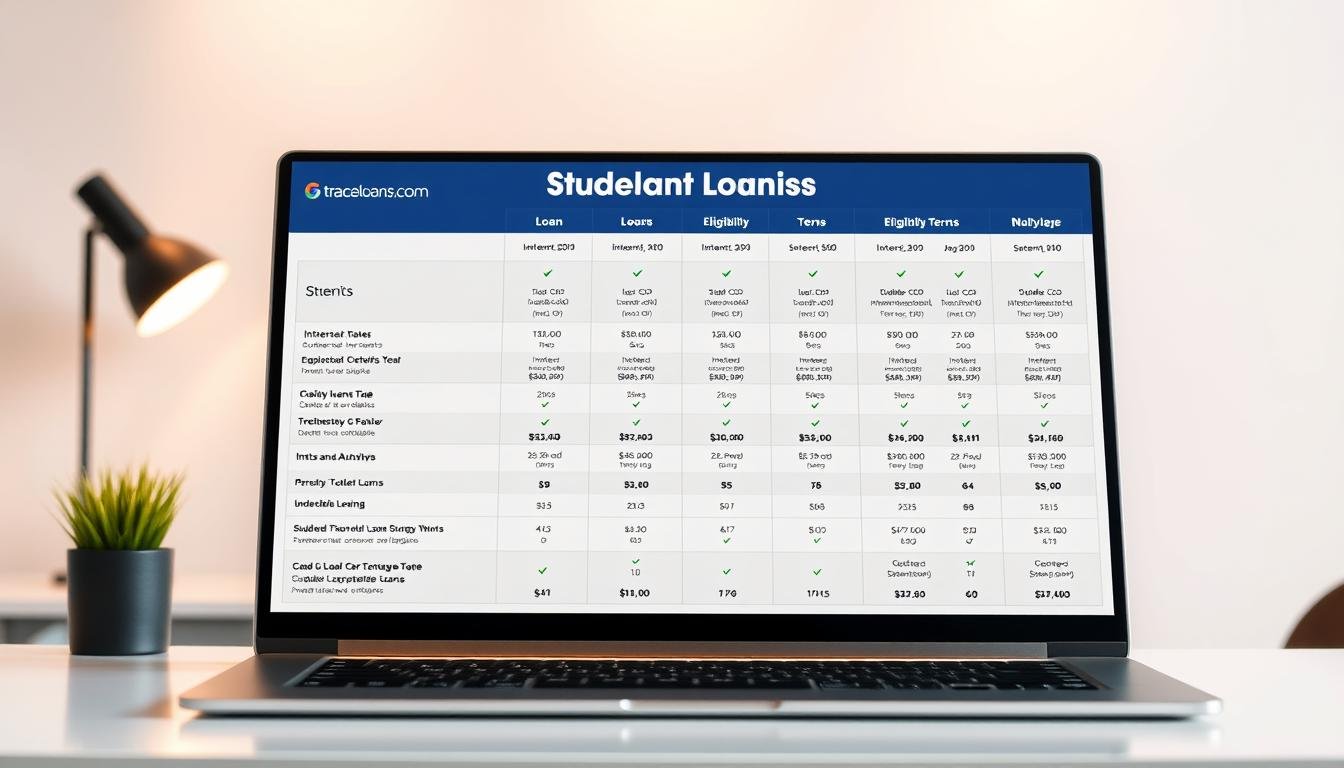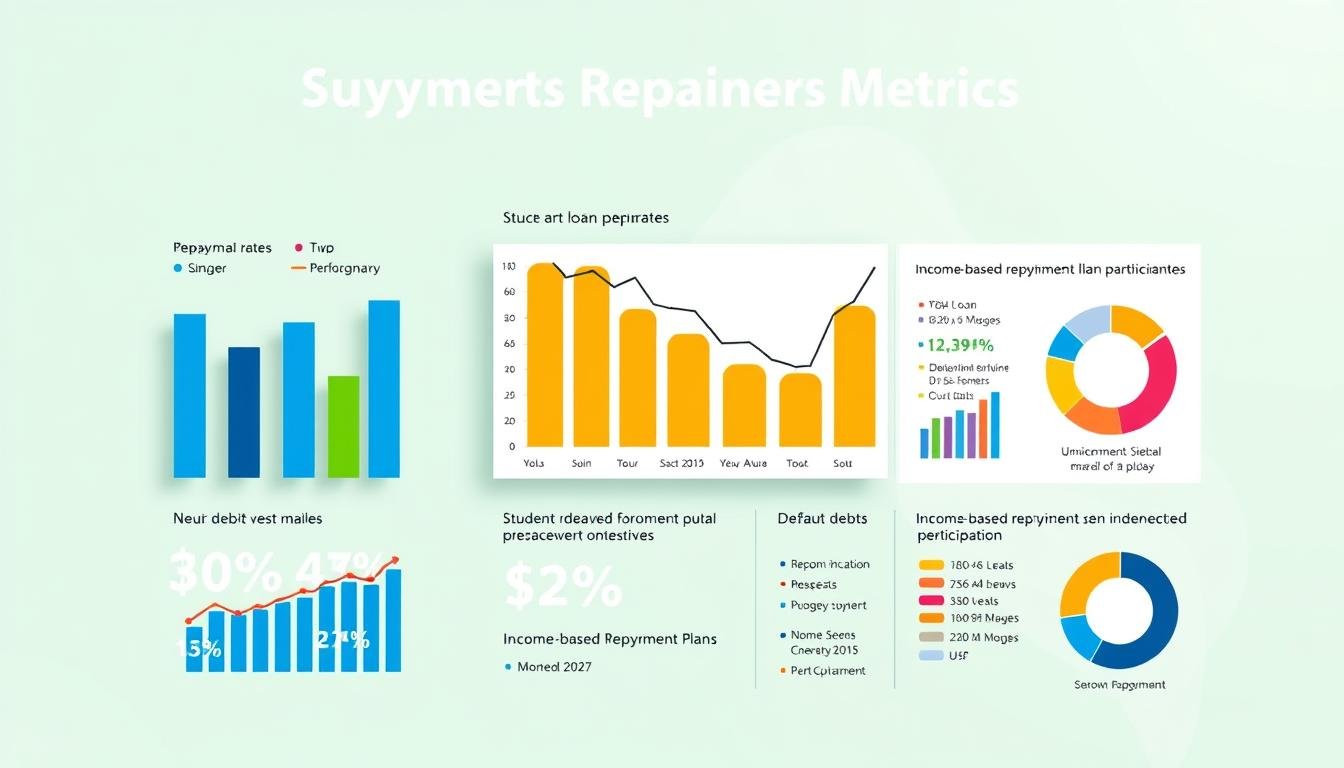You look at your mortgage statement and see a big jump in your monthly payment. It’s because of an escrow shortage notice. This shows how double-edged bundled tax and insurance payments can be. They’re meant to make budgeting easier, but they can also make you wonder: “Does this system protect my finances or control them?”
After 15 years studying insurance and mortgages, I’ve seen escrow’s good and bad sides. It’s a financial safety net in most government-backed loans. But, it can also cause problems if insurance rates or taxes change.
Every borrower should ask a few important questions. Can you earn interest on escrow funds in your state? How often do lenders check if you need more escrow? What if your servicer makes a mistake with payments? We’ll look at how escrow affects your money, the rules that protect you, and the long-term costs. Here we’ve discussed home loan escrow account pros and cons in detail. This breakdown will help you determine whether centralized payment management aligns with your financial goals.
Key Notes
- Escrow accounts prevent missed tax/insurance payments but reduce cash flexibility
- State laws determine if lenders must pay interest on escrow balances
- Annual escrow analyses can lead to sudden payment adjustments
- Servicing errors might leave properties underinsured during disputes
- Opting out typically requires 20% equity and strong financial discipline
What is Home Loan Escrow Accounts
A home loan escrow account is like a savings jar managed by your lender. Each month, part of your mortgage payment goes into this jar to cover property taxes and insurance. The lender pays these bills for you when they’re due, preventing missed payments but limiting your control over the cash. When you get a home loan, escrow accounts help with bills. They hold money for property taxes and insurance. This way, you don’t have to worry about paying them on time.
How Escrow Accounts Work for Property Tax Management
Your lender figures out how much property tax you’ll need each year. They split it into monthly payments. For example, if your yearly tax is $3,600, you’ll pay $300 each month.
The escrow service keeps this money until tax time. Then, they pay your taxes for you. This stops you from getting penalties or liens.
First-time buyers really benefit from this. Sarah, a new homeowner in Texas, pays $300 each month for taxes. This helps her avoid a big tax bill every January.
Key Components: Insurance Premiums vs PMI Payments
Escrow accounts manage two types of insurance payments:
- Homeowners Insurance: Paid annually on your policy renewal date
- PMI (Private Mortgage Insurance): Required until you reach 20% home equity
PMI payments depend on your loan type. FHA loans need mortgage insurance for the whole loan term. Conventional loans cancel PMI when you have 22% equity.
Lender Escrow Requirements Explained
Most lenders need escrow accounts for loans with less than 20% down. Government-backed loans like FHA and USDA always need escrow. Conventional loans might let you stop escrow when you have enough equity.
Escrow balances vary by lender. Some want a two-month cushion for tax or insurance increases. Always check your escrow statement to see how much you have and how much you’ve paid.
Home Loan Escrow Account Pros and Cons: The Core Benefits
Mortgage escrow accounts help a lot of people. They make owning a home easier. Let’s look at three main benefits that make them great for those who watch their money.
Top Pros and Cons of Home Loan Escrow Account
| 🟢Cons | Pros 🔴 | ||
| 🟩 Simplified Budgeting | Bundles taxes/insurance into one predictable payment. | 🟥 Payment Surprises | Annual shortages can spike monthly bills (e.g., 300→300→450). |
| 🟩 Avoids Penalties | Guarantees on-time tax/insurance payments. | 🟥 Lost Interest | 3,600/yearinescrowearns3,600/yearinescrowearns0 vs $144 in a 4% savings account. |
| 🟩 Lender Compliance | Required for FHA/USDA loans and sub-20% equity. | 🟥 Lender Errors | 1 in 7 accounts have miscalculations (CFPB data). |
| 🟩 Disaster-Proof | Adjusts for flood/fire insurance hikes automatically. | 🟥 Rigid Control | Can’t invest escrow funds in CDs/T-bills for higher returns. |
Simplified Budgeting Through Payment Bundling
Escrow accounts make big expenses smaller. They mix property taxes, insurance, and PMI into one payment. This way, you don’t get surprised by big bills.
Take Phoenix’s Maria Torres for example. She didn’t have to pay $4,200 in property taxes all at once. Her $350 monthly payment spread it out over 12 months. This is really helpful during the holidays when you have lots of other bills.
Mortgage Compliance Advantages
People with adjustable-rate mortgages get a big help from escrow accounts. Payments adjust to cover changing taxes and insurance. This:
- Keeps insurance from stopping
- Makes sure you have flood insurance
- Helps you pay taxes on time to avoid liens
Federal Housing Administration loans need escrow accounts. They protect both the borrower and the lender from problems.
Potential Interest-Bearing Escrow Accounts
Some lenders, like Wells Fargo, offer special escrow accounts. These accounts:
- Keep a minimum balance
- Make a little money on extra funds
- Use extra money to cover shortfalls
These accounts are not common, but they show how escrow services can help. Always ask about these options when you’re getting a mortgage.
The Hidden Costs of Escrow Management
Escrow accounts make paying bills easier, but they also have risks. People living near the coast face 23% higher escrow shortage rates than those inland. This can lead to unexpected costs during annual reviews or tax increases.
Escrow Shortage Risks and Payment Spikes
In Miami-Dade County, property taxes went up 14% last year. This caused many escrow shortages. If your account is short, lenders might:
- Spread the deficit over 12 months
- Require lump-sum payments
- Increase monthly escrow payments permanently
This means you’ll have to pay back money right away and also pay more each month. Federal rules let lenders keep up to 2 months’ cushion, making payment spikes worse.
Cash Flow Control Limitations
Escrow accounts keep money from growing in savings. Here’s a comparison:
- $300/month escrow payment = $3,600 lost each year
- High-yield savings at 4% APY = $144 yearly earnings
Lenders often put escrow money in accounts that earn little to no interest. This can cost homeowners hundreds over time. It’s a big problem for investors and those with irregular income.
Common Lender Calculation Errors
CFPB says 1 in 7 escrow analyses have big mistakes. The top five mistakes are:
- Outdated tax assessment projections
- Incorrect insurance premium estimates
- Miscalculated PMI termination dates
- Improper cushion calculations
- Failure to account for homestead exemptions
These errors can surprise homeowners with unexpected bills or hurt their credit score. Regular checks can find these mistakes before they cause big problems.
Real-World Escrow Case Studies

Mortgage escrow accounts can change lives. They help or hurt based on how much money you have. These stories show how escrow affects people of all ages and money levels.
New Homeowner Masters Escrow Strategy
Sarah Martinez is a 31-year-old teacher in Austin. She has a $285,000 mortgage. Her $85,000 salary lets her make automatic payments for:
- Property taxes ($3,200/year)
- Homeowners insurance ($1,100/year)
- PMI coverage ($85/month)
Key benefit: Sarah saves $150 a month by paying all at once. Her lender found a $420 mistake in her taxes. This shows escrow’s value in catching errors.
Fixed-Income Retiree Faces Escrow Crisis
Robert Greene is a Florida retiree. His escrow account didn’t cover new HOA fees. His $42,000 a year income couldn’t handle the $296 monthly increase. The mistake was:
- Not including $1,800/year HOA fees
- Causing a $2,109 escrow shortage
- Need for a 12-month repayment plan
“I trusted the system completely,” Greene said. “Now I check every detail carefully.”
| Factor | Martinez Case | Greene Case |
|---|---|---|
| Income Type | Steady Salary | Fixed Pension |
| Payment Change | -7% Adjustment | +38% Spike |
| Recovery Options | Extra Principal Payments | Loan Modification |
Escrow works best for those with steady jobs and predictable bills. Seniors should ask for bi-annual escrow reviews to avoid surprises.
Escrow Account Regulations Every Borrower Should Know
Understanding escrow rules is key. You need to know federal laws and state rules. These rules affect how lenders handle your escrow account. Breaking them can cost over $10,000.
RESPA Requirements for Mortgage Escrow
The Real Estate Settlement Procedures Act (RESPA) has rules for escrow. It protects you with:
- Annual escrow analysis statements
- 60-day notice for payment changes
- Refunds for too much money within 30 days
In Texas, a lender got fined $43,000 for breaking RESPA. California has extra rules for borrowers.
Escrow Cushion Limits
Federal law says escrow can’t hold more than two months’ worth of payments. Some states have tighter rules:
| State | Maximum Cushion | Special Rules |
|---|---|---|
| Florida | 1.5 months | Hurricane insurance exceptions |
| New York | 2 months | Co-op fee restrictions |
| Illinois | 1 month | Farmland exemptions |
Lenders must give back extra money within 20 business days, RESPA says.
State Escrow Mandates
In Alaska, tribal lands don’t need property tax escrows. Other states have their own rules:
- Nevada: You can pay taxes yourself for loans under $250,000
- Massachusetts: You get 0.5% interest on your escrow money
- Hawaii: You must have tsunami insurance escrows in coastal areas
“State laws control escrow practices when they offer greater consumer protection than federal regulations.”
HUD Interpretation Ruling 2022-4
Annual Escrow Analysis: What to Expect

Your mortgage servicer does an annual escrow analysis each year. They check if you have enough money for bills. This review compares what you paid last year with what you might pay this year. It can show big changes in what you pay for your home.
Decoding Your Escrow Statement
A PennyMac escrow statement has three main parts: your current balance, what you might pay, and any changes. Look for these things:
- Previous year’s tax assessments vs new rates
- Homeowners insurance renewal dates
- PMI cancellation eligibility markers
Servicers must send statements 30 days before changes happen. “Always check county tax records against your statement,” a NACA housing counselor says. Often, problems come from changes in flood zones or fire districts.
Managing Account Balances
Escrow accounts can have two main outcomes each year:
| Scenario | Action Required | Timeframe |
|---|---|---|
| Surplus Over $50 | Check refund options | 30-day response window |
| Shortage Over 1 Month’s Payment | Choose repayment plan | 12-24 month terms |
Here’s a 5-step plan for reviewing your analysis:
- Confirm tax assessment appeal deadlines
- Compare insurance premiums across providers
- Calculate PMI removal date using amortization
- Audit escrow cushion percentage
- Request payment history if shortages recur
If you keep having trouble, NACA’s escrow dispute template can help. Many people get back overpaid money by asking for it within 60 days of getting their statement.
Escrow vs Self-Managed Tax Payments
Homeowners have to choose between escrow and paying taxes themselves. This choice affects money flow, growth, and rules to follow. Let’s look at how these choices do in important money areas.
Financial Management Face-Off
| Factor | Escrow Accounts | Self-Managed |
|---|---|---|
| Payment Timing | Automatic | Manual |
| Late Fee Risk | 0.2% (lender-covered) | 4.7% national average |
| Interest Earnings | Non-interest bearing | 4.25% APY CDs available |
| Time Investment | 15 mins/year | 4-6 hours/year |
| Cash Control | Lender-held reserves | Full liquidity access |
| Penalty Protection | Guaranteed | Personal responsibility |
| Investment Options | None | CDs/T-bills/MMAs |
| Regulatory Changes | Lender-managed | Self-monitored |
| Fee Structure | 0.25%-1% service fees | Account maintenance only |
| Dispute Resolution | Through lender | Direct with agencies |
Wealth Building
Managing taxes yourself can make a lot of money. A $50,000 property tax fund in 5-year CDs at 4.25% APY makes:
- $2,125 a year in interest
- $11,563 total in earnings
- 4.8% more than inflation
Maria Cortez in San Diego shows this. She moved $85,000 from escrow to CDs. Now, she earns $3,611 a year and can use her money when needed.
Choosing escrow needs discipline but pays off for those who save. Think about how much risk you can take and what you want to achieve. Next, we’ll see when keeping escrow is a good idea.
When to Keep Your Escrow Account
Escrow accounts are good for homeowners who like knowing what to expect. Lenders usually ask for them until you own 10% of your home. But, some reasons might make you keep it even after that.
First-Time Buyer Scenarios That Demand Escrow
Three key situations make escrow accounts non-negotiable for new homeowners:
- Subprime credit profiles: Lenders often mandate escrow for buyers with credit scores below 680
- Multi-state property owners: Managing tax payments across different jurisdictions becomes error-prone without professional oversight
- High-risk disaster zones: Insurance premiums in flood/fire areas frequently change, requiring precise payment coordination
First-time buyers with less than 20% home equity get extra protection. “Escrow acts as a financial training wheel,” says a HUD housing counselor. “It prevents missed payments that could trigger default clauses.”
Fixed-Income Homeowner Advantages
Retirees and disability recipients really benefit from escrow. Here’s why:
“Our Senior Escrow Plus program smooths out property tax spikes for fixed-income clients,” says Navy Federal Credit Union’s mortgage director. “Members budget $300 monthly instead of facing $2,400 annual payments.”
This way of paying helps avoid money problems during tax time. Escrow also adjusts for:
- Annual insurance premium increases
- Tax assessment changes
- Special district levies
For homeowners on Social Security or pensions, escrow is a big help. It keeps you from needing a big emergency fund. The system works well with steady income and keeps you safe from liens.
Opting Out: How to Remove Escrow
Escrow accounts are convenient, but some homeowners like to handle tax and insurance payments themselves. Before you cancel, know the money and legal steps involved. Here are the three main things to know about removing escrow from your mortgage.
Qualifying for Escrow Cancellation
Lenders want 20% home equity and a year of on-time payments to let you cancel escrow. Big lenders like Rocket Mortgage have these rules to keep things safe. You also need:
- No late mortgage payments in the past year
- Full coverage homeowners insurance
- Current property tax status
Source 1 says 38% of requests to cancel escrow are turned down because of missing papers. Always get a written okay before stopping escrow payments.
Refinancing Implications
When you refinance, you might lose your escrow cancellation rights. Even if you were allowed to cancel before, lenders might change their minds. Things to think about include:
- New loan-to-value ratio calculations
- Potential reapplication fees ($150-$300)
- Possible rate adjustments for non-escrow loans
“Borrowers who remove escrow then refinance often face stricter requirements,” says a mortgage expert. Always check the fine print in your refinancing contract for escrow rules.
State-Specific Opt-Out Regulations
Five states don’t let you cancel escrow on conventional loans:
- Texas
- Oklahoma
- Mississippi
- Louisiana
- Arkansas
These states make you keep escrow for all government-backed loans. Source 2 says 22% of lenders have extra rules. Check your local laws before you ask to cancel escrow – some places need you to sign papers in person.
FAQ: Can you put escrow back on after canceling it? Most lenders let you, but might charge fees and check if you qualify again. Keep separate money for taxes and insurance if you’re paying them yourself.
Auditing Your Escrow Account

Checking your escrow account regularly is like a health check for your money. It finds mistakes and stops money problems. A study of 2,300 complaints shows 41% are about escrow issues. These can be fixed with regular checks.
Here are some tips to keep your money safe and your home value growing.
7-Step Escrow Review Process
- Compare your latest escrow statement with property tax bills and insurance invoices
- Verify payment due dates match local tax schedules
- Check cushion calculations against RESPA’s 1/6th annual limit
- Confirm PMI cancellation date aligns with loan amortization
- Track insurance premium changes across policy periods
- Document all discrepancies with timestamps
- Request written explanations for unclear charges
Top 3 Escrow Calculation Errors
- Double PMI charges: Lenders sometimes overlook automatic termination at 78% LTV
- Expired tax breaks: Senior exemptions or homestead credits may not auto-renew
- Outdated insurance: 62% of audits find premium estimates using expired policies
“Our escrow audit revealed $142/month in unnecessary PMI payments two years after reaching 20% equity. The CFPB portal resolved it in 18 days.”
– Mark & Lisa T., Ohio homeowners
Effective Dispute Tactics
When challenging escrow errors:
- Use the CFPB’s Escrow Dispute Template for structured complaints
- Reference specific RESPA sections (12 CFR 1024.17)
- Attach notarized proof of timely payments
- Request written correction timelines
Escrow audits can save you about $1,200 on average, says NCLC. Do these checks twice a year to keep your money safe.
Escrow Alternatives for Savvy Investors
Seasoned homeowners look for better financial tools than escrow accounts. Mortgage impound accounts make payments easy. But, other options can help you earn more and manage your money better.
High-Yield Savings Solutions
CIT Bank’s 4.85% APY savings account beats escrow’s 0% interest. It’s a good place for extra money:
| Investment Type | Average Yield | Liquidity |
|---|---|---|
| High-Yield Savings | 4.00-5.00% | Immediate |
| Treasury Ladders | 4.30-5.20% | 1-12 months |
| Money Market Funds | 4.25-4.75% | 1-3 days |
A $50,000 Treasury ladder can earn $2,150 a year. Important: 47 states let lenders charge penalties for early escrow removal. Always check your mortgage agreement first.
Strategic Tax Payment Timing
Biannual property tax payments offer investment chances. Here’s a smart plan:
| Month | Action | Interest Earned |
|---|---|---|
| January-June | Invest tax funds | $412 (5% APY) |
| July-December | Repeat strategy | $412 (5% APY) |
This strategy can earn $824 a year on a $10,000 tax bill. Pair it with automatic transfers to avoid late payments. Some counties offer discounts for early payments, which might be more than interest.
Key consideration: Keep tax and insurance funds separate to avoid spending them by mistake. Use alerts to remember payment deadlines and check your balance.
Conclusion: Making the Right Escrow Decision
Think about three main things when deciding on a home loan escrow account. These are financial discipline, knowing the rules, and using technology. If your income changes a lot, an escrow account can help manage property taxes.
But, if you use tools to budget your money, paying taxes directly might be better. Check your state’s laws about escrow accounts online before you decide.
Here’s what to do next: figure out how much equity you have in your home. Use a mortgage calculator to find out. Then, see if you can skip escrow in your state.
Use a financial planner to see how much you’ll pay each year. People who make less than $50,000 a year usually keep escrow. But, those making more than $100,000 might choose to manage their taxes themselves.
Think about how you handle unexpected tax bills. First-time buyers in places like Texas often keep escrow. But, experienced buyers in Florida might not need it once they have 20% equity.
Use a calculator to see how different choices affect your budget. Look at your current mortgage rate and insurance costs.
Decide if an escrow account is right for you by comparing it to other ways to invest. If you’re unsure, talk to a housing counselor. Remember to review your choice every year as your home’s value and insurance needs change.











